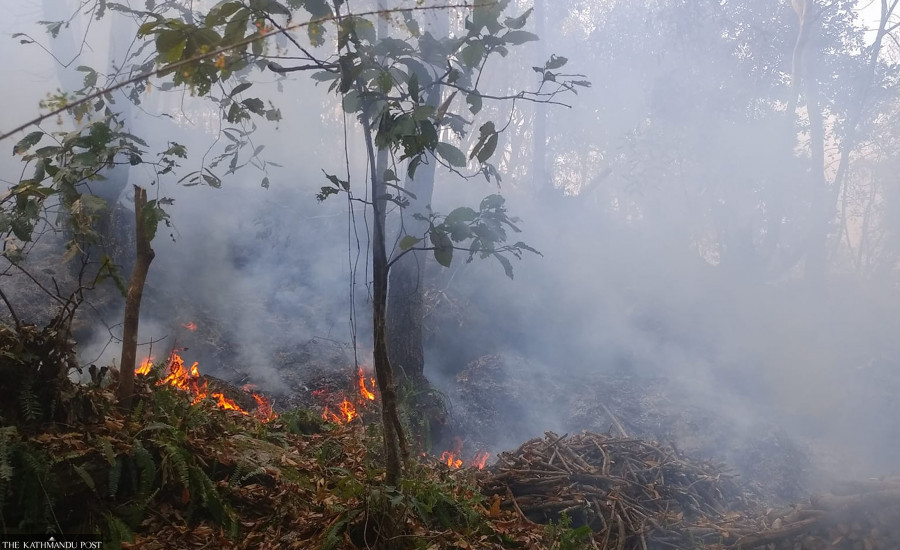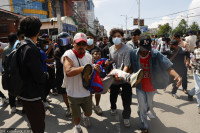Editorial
Raging problem
After fires, human deaths and loss of property can be quickly calculated. Yet the damage is deeper
On Friday, two children were killed in a house fire in Hilihang Rural Municipality-7 of Panchthar district. On the same day, 14 houses were engulfed in a fire in another eastern district of Terhathum. The Nepal Army on Saturday evacuated two fire victims from Surkhet to Kathmandu. According to the National Disaster Risk Reduction and Management Authority, 30 people have lost their lives in fire incidents since the start of 2023. In 2022, 106 people had died in similar incidents. Loss of human lives and properties in fires in Nepal is a growing concern. The number of such incidents could now sharply increase as the spring season, considered a season of fires in Nepal, is upon us. Spring in the country starts on March 1 and lasts till May. But the situation this year was different. Incidents of forest fires increased during the winter as well due to a prolonged dry spell. Kathmandu witnessed a light rain on Sunday only after a long gap of four and a half months.
This winter, forest fires raged not only in the country’s hilly and flat regions, but also along the Himalayan range. Some parts of Rolwaling municipality in Gaurishankar Himal in Dolakha district were destroyed by these fires. Residents of the area said the peaks that used to be covered by pristine snow were blackened from the wildfires. An increasing number of such incidents in the mountainous region has in fact become an international concern. Multinational studies show that more than 35,000 hectares of tree cover were lost to wildfires in the Himalayas between 2001 and 2021, according to the Global Forest Watch Data. The figure refers to wildfires across Nepal and Bhutan, and Himalayan areas of India and Pakistan. Nepal's recovery of forests is seen as a rare global success story but protecting these forests has become increasingly challenging. Studies show forest fires are triggered more by human activities and negligence than natural causes. People in rural parts seem to be taking the incidents of fire lightly and seem unaware of the consequences to the overall environment, wildlife conservation, and protections of important flora and fauna.
After fires, people and authorities often record the number of human deaths and loss of properties that can be immediately calculated based on field observation. Yet the damage is more widespread. Wildfires not only kill animals but also destroy vegetation and lead to the decay of even the soil of the area, which eventually impacts the place’s ecology. All living things from worms, insects, mammals and birds to predators as well as all types of vegetation are important for a vibrant ecosystem—and hence all of them need protection.
As we are at the start of the spring season, it’s the right time to seriously work in this direction. To decrease the incidents of fire and cut the losses, there should first be clear plans and programmes to inform people on the importance of biodiversity and lasting consequences of wildfires. They should then be encouraged to control the fires immediately after they notice them. Villagers and community forest groups can be incentivised for this. Likewise, local level units should be sensitised on the losses that forest fires do to the ecology and people’s livelihoods. Not just that. They must also be trained and equipped to tackle the fire incidents on time.




 10.12°C Kathmandu
10.12°C Kathmandu














